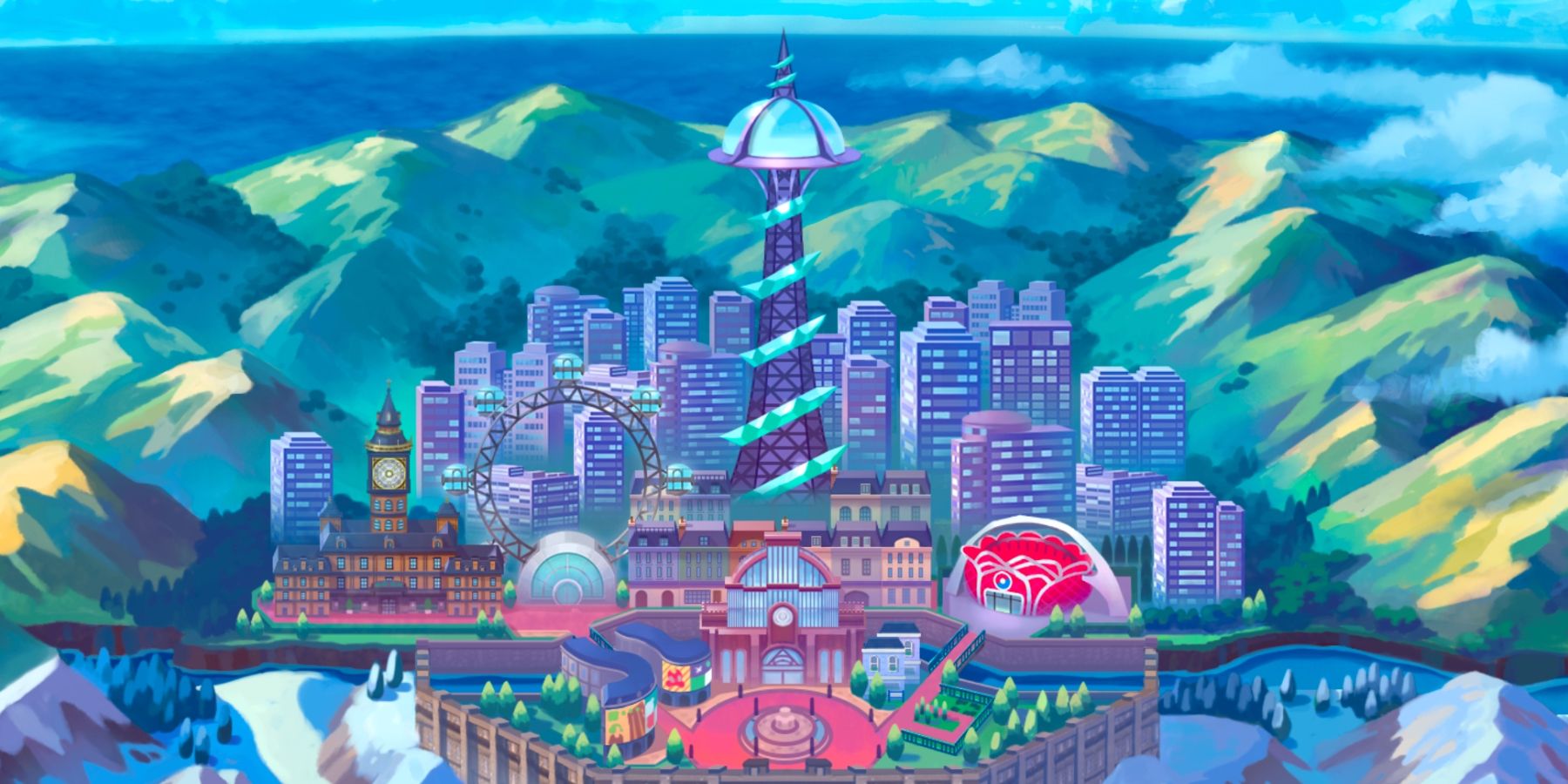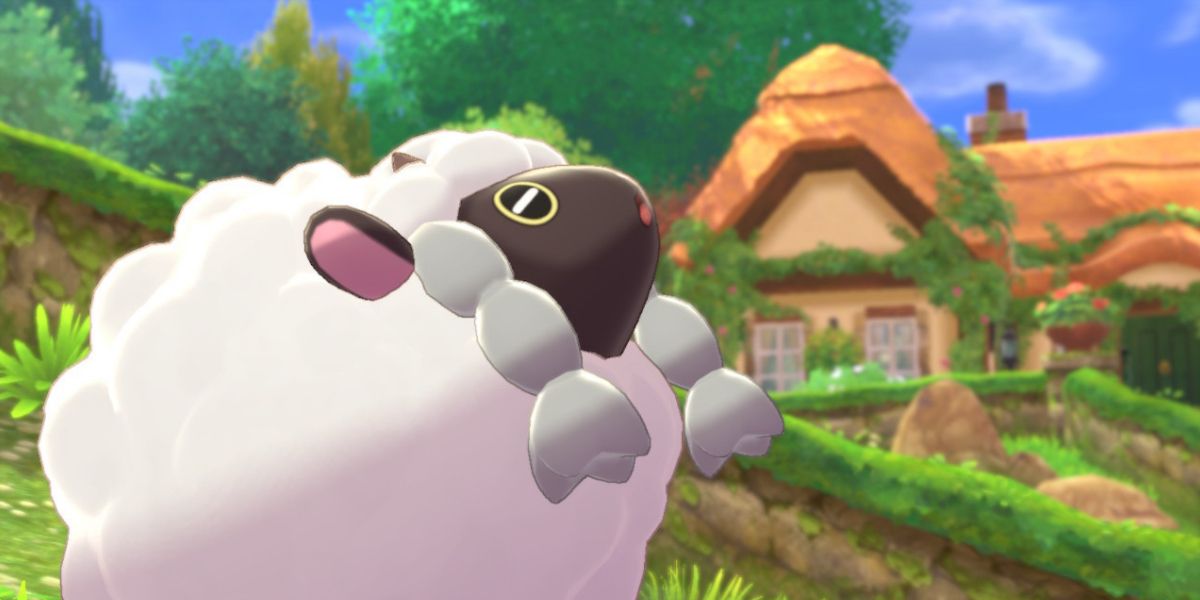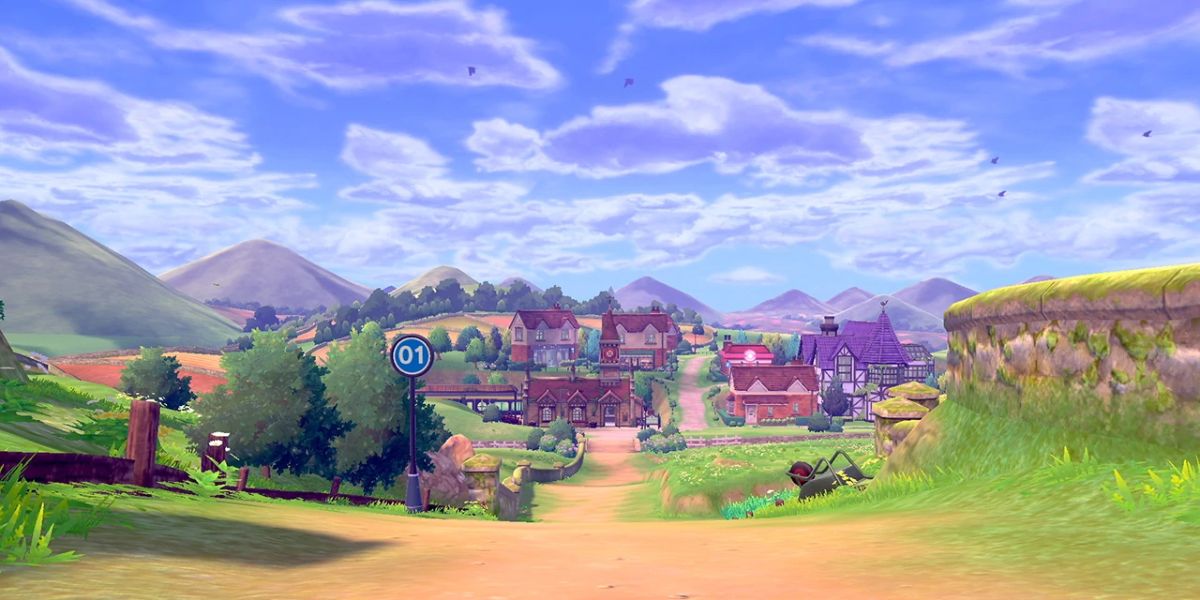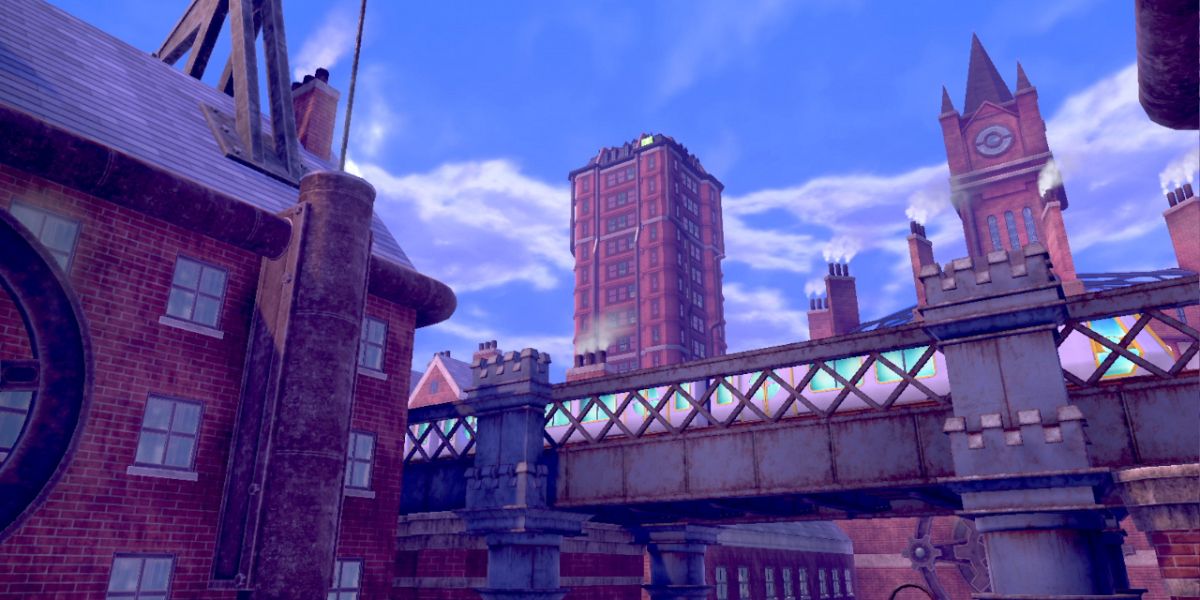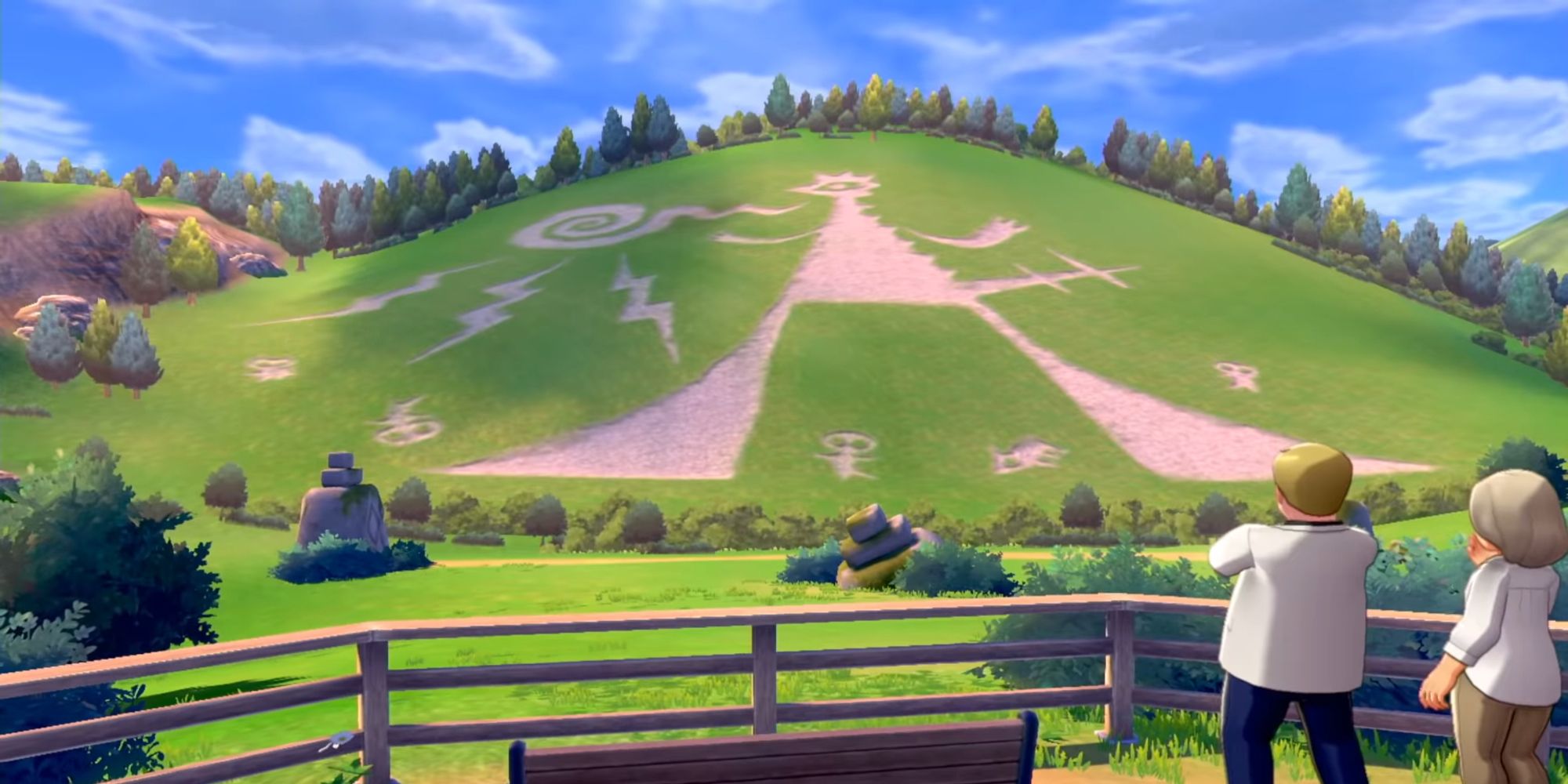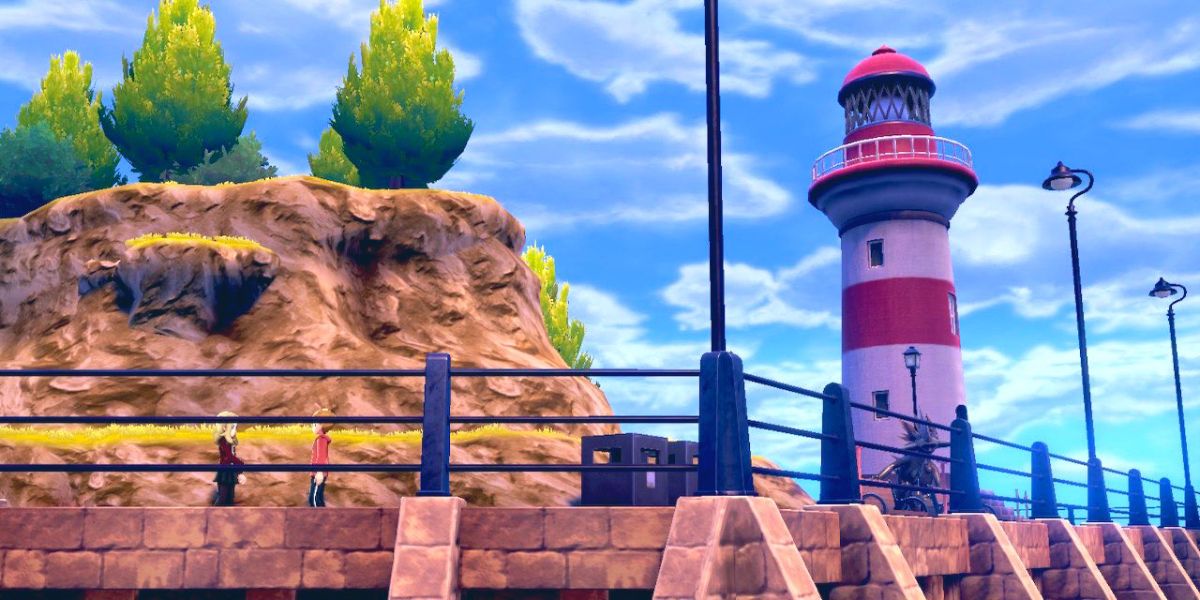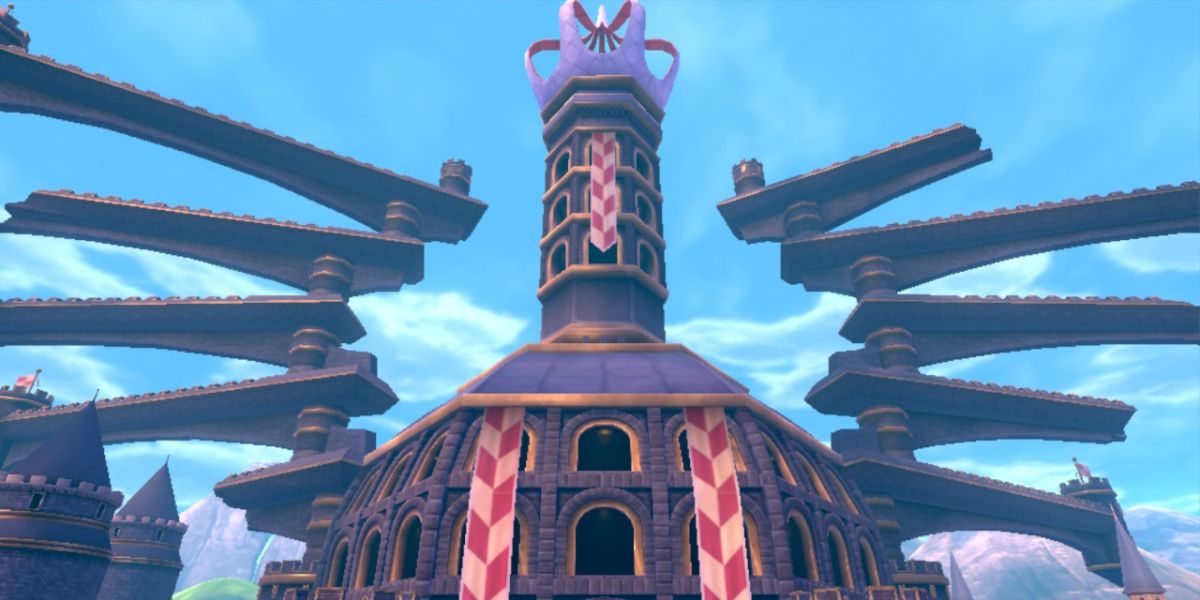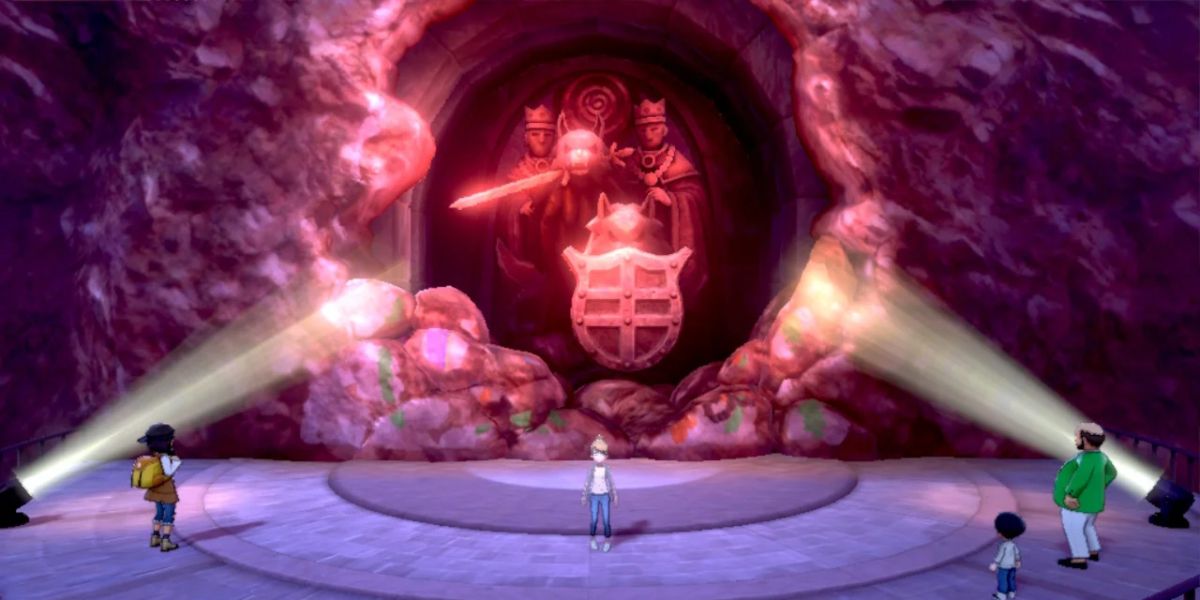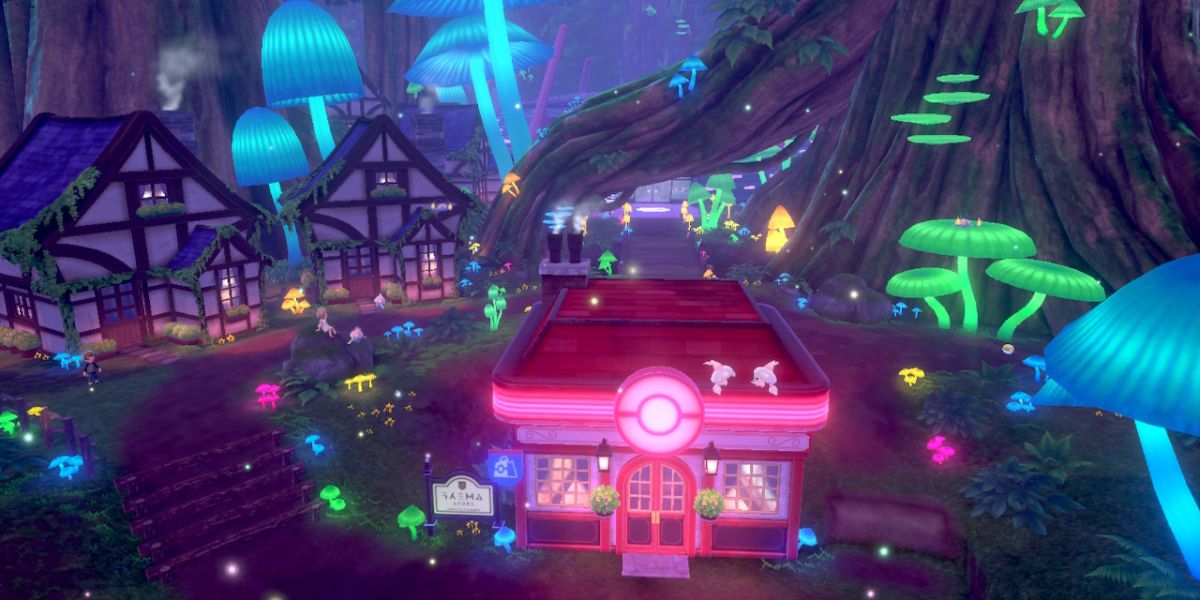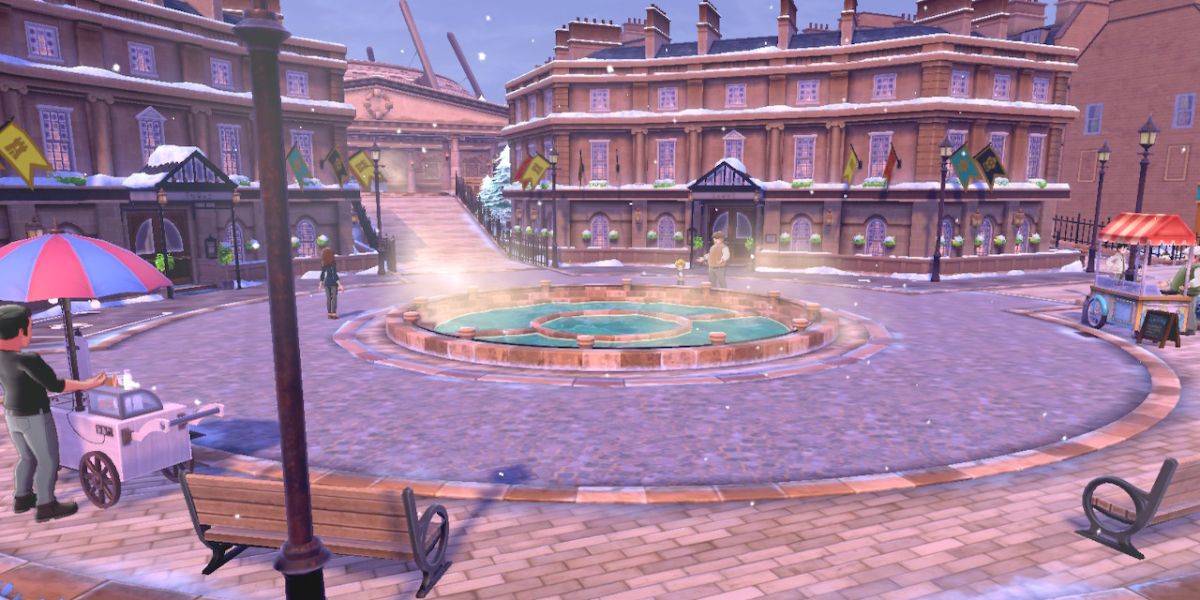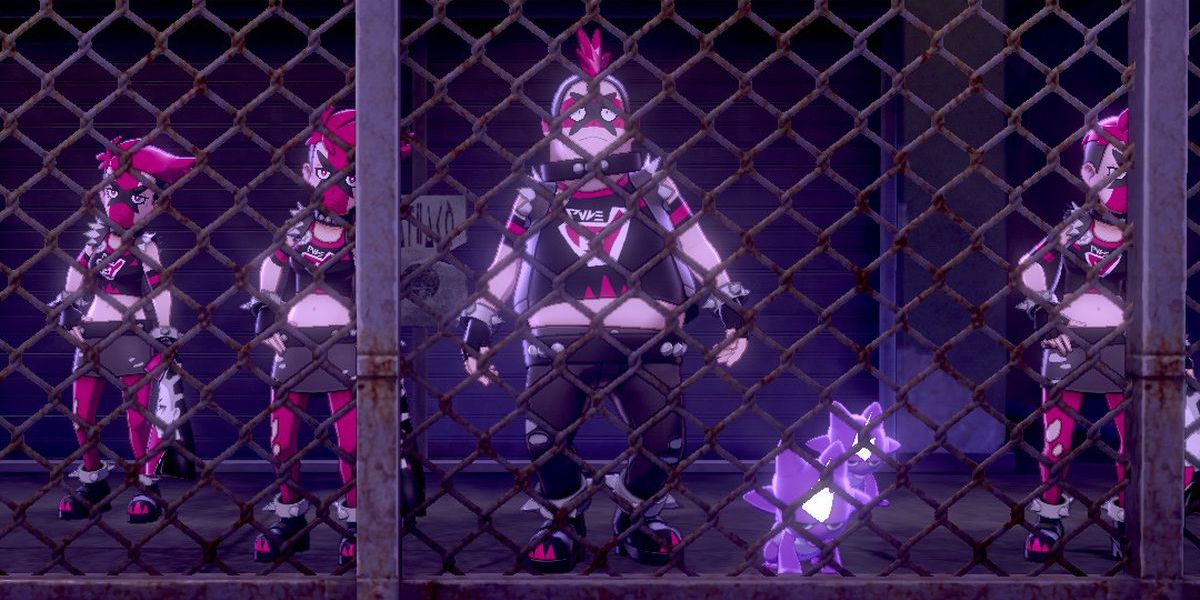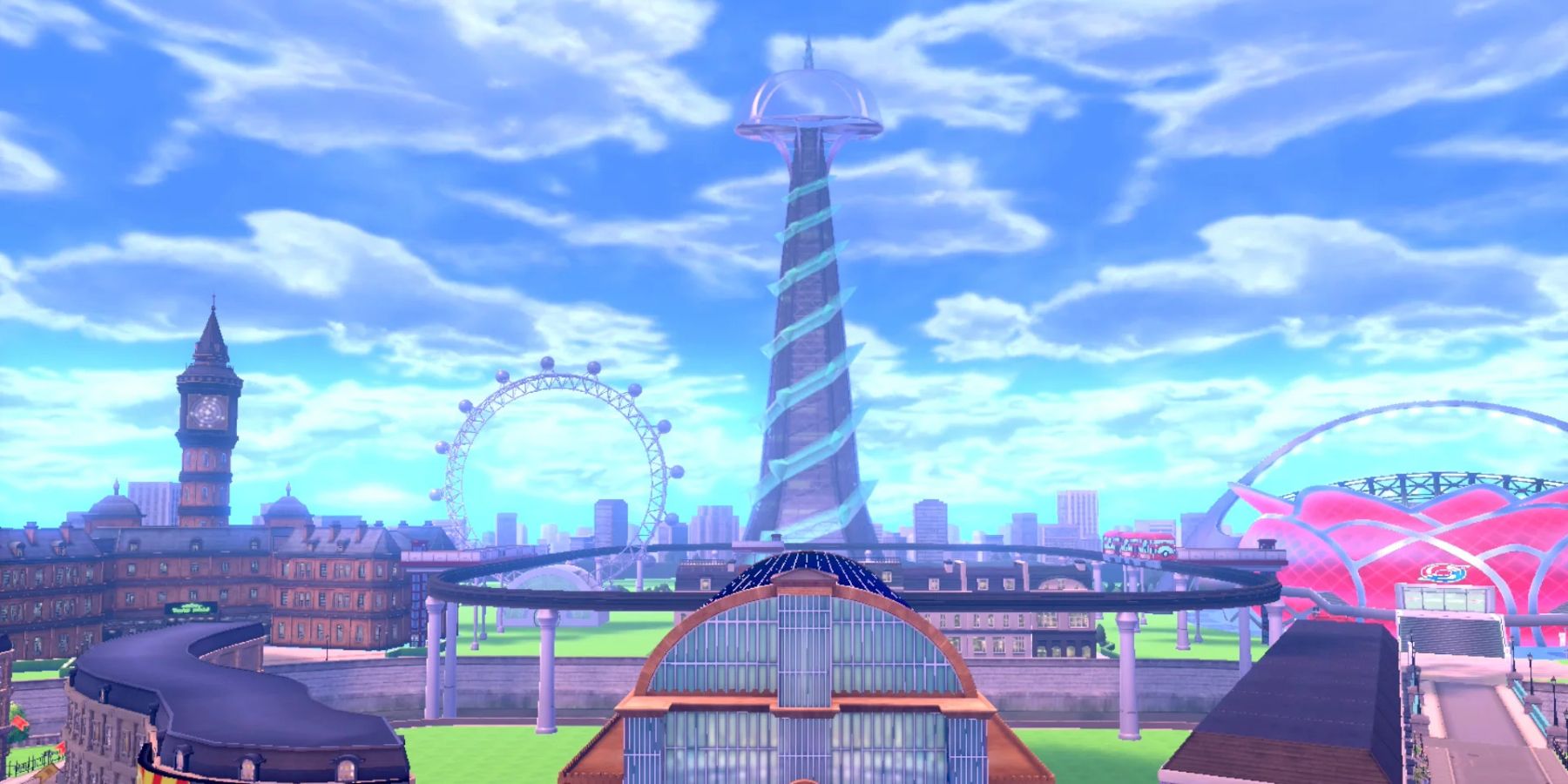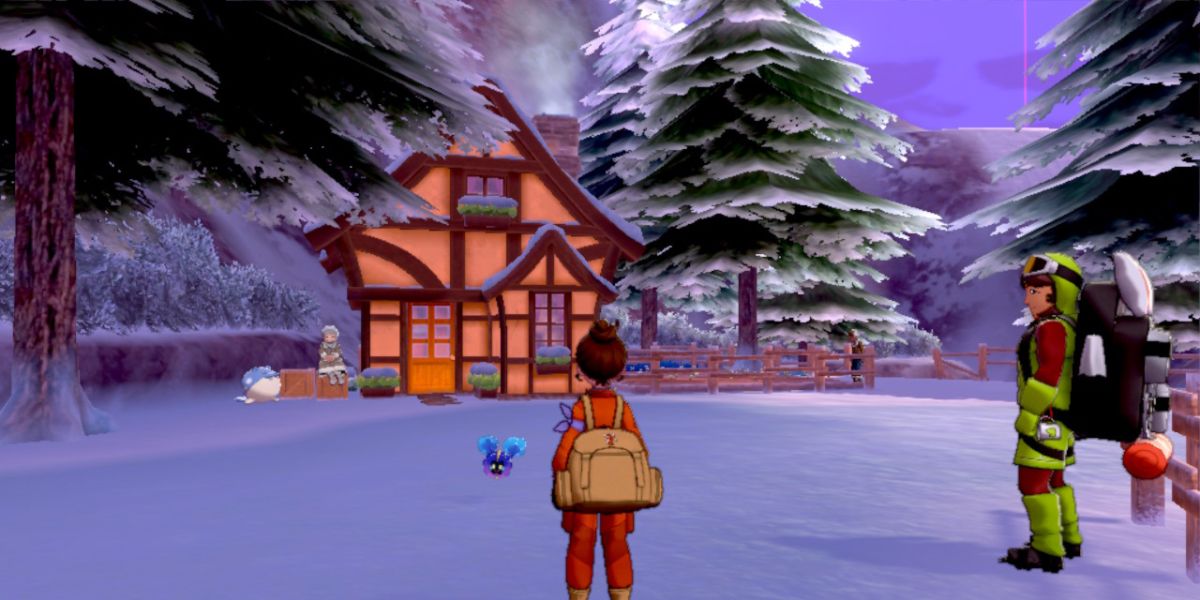Pokémon Sword and Shield continues the series tradition of giving all of its town names a unified theme. The towns from the first generation are famously all named after colors, with the starting location, Pallet Town, acting the metaphorical pallet which grants access to all the colors. The symbolism isn't quite as strong in Pokémon Sword & Shield, but each town has a name which is representative of the respective locations.
The Galar region, where Sword and Shield's Dynamaxing is exclusive to and the game itself takes place, is heavily influenced by the real life United Kingdom, most prominently the member nation of England. The landmass itself resembles the island of Great Britain strongly, if only the south end of the island were north instead. The name Galar itself is reminiscent of the word "gallant," which is heavily associated with the knights errant who were active in medieval Europe, with "Knight" still being an honorary title in the modern United Kingdom. Gallantry is also closely associated with the Arthurian knight Galahad, which shares a similar spelling to Galar as well.
With the Sword & Shield's region itself so steeped in English etymology, it's no surprise that its individual towns follow suit. This is about as far as their connections to one another go, though, and there is no unifying theme like that in Generation 1. Instead, each name seems specific to the town itself, often mirroring the type of commerce present or using a word closely associated with the type of Pokémon used in each gym. Additionally, each name typically has a British suffix or name structure commonly used for real life towns.
Galarian Town Names: Postwick
The player's hometown of Postwick is as quaint as any other starting town in Pokémon. Postwick is a farming town, and while it shares its name with an actual English village, the "post" half might allude to the town's propensity for livestock. Wooloo, which evolves into one of Gen 8's worst possible Pokémon team members, cannot be caught in Postwick, but they are seen throughout, and fenceposts connected by wire is a commonly inexpensive means of confining livestock.
Galarian Town Names: Wedgehurst
Westhurst is a small town north of Postwick, home to Galar's Pokémon Research Lab where the player meets Pokémon Professor Magnolia. The word "hurst" is an outdated term for a small hill, and is a common part of village names in England. The "Wedge" in Wedgehurst may refer to a golfing wedge, a type of iron club, since the modern sport was invented in Scotland in the 15th century.
Galarian Town Names: Motostoke
As the first industrial city encountered in Sword & Shield, the first half of Motostoke undoubtedly refers to the word "motor." When combined with "stoke," as in to stoke a flame, the town name brings to mind the combustion engine, a quintessential invention from the Industrial Revolution, which began in Great Britain before spreading to the rest of the western world. The tower in the picture above bears a passing resemblance to Big Ben, but according to the Galar Expedition Guide, Motostoke is based on Manchester, and Big Ben's actual Pokémon analogue is in another Sword and Shield town based on London.
Galarian Town Names: Turffield
According to the Galar Expedition Guide, the massive, ancient stone artwork near Turffield that alludes to Sword & Shield's Gigantamax mechanics is inspired by Stonehenge. "Turf," a synonym for "ground," makes Turffield's name fairly straightforward, with the suffix "-field" another common English village name ending. Turffield is another farming community, like Postwick, hence its Gym Leader favoring grass-type Pokémon.
Galarian Town Names: Hulbury
As a town on the eastern Galar coast, Hulbury's name invokes oceanic themes. "Hul-" is a reference to the hull of a ship or watercraft - the outermost, watertight layer. The aquatic theme is further reinforced by the town's famous seafood restaurant, The Captain's Table. The suffix "-bury" is also commonly used in English villages or cities, such as Canterbury, the city made globally famous by Middle English author Geoffrey Chaucer.
Galarian Town Names: Hammerlocke
Hammerlocke shares its name almost entirely from the word "hammerlock," a type of wrestling move, but its medieval architecture mimicking a castle suggests the ending "-locke" to be a more straightforward toponym. Both meanings together elucidate a place of high security, which is backed up by the presence of the Hammerlocke Vault, which houses ancient tapestries depicting the history of the Darkest Day and Pokémon Sword and Shield's Galar region.
Galarian Town Names: Stow-on-Side
Stow-on-Side has perhaps the least referential name, more or less being just a play on British naming conventions. The hyphenated title seems to mimic how some villages are named. For instance, William Shakespeare was from Stratford-upon-Avon. The "Stow" may be a nod to the hidden statues of Zacian, Zamazenta, and the twin Galarian kings (pictured above) which were stowed in the side of a cliff face.
Galarian Town Names: Ballonlea
The ending of Ballonlea's name may possibly be borrowing the Old English word "lea," which is related to an Old High German word for "grove." "Ballon" is a French a word meaning "balloon," and is more generally used to refer to spherical objects. Its most popular usage in English-speaking countries is likely the Ballon d'Or, the prestigious international soccer (or football) award. Ballonlea's name combines these two parts to highlight both its location within the forest grove, as well as the glowing mushroom caps which infest the town's surrounding area, one of the more visually striking locations in the game which helps separate Galar as different from other regions.
Galarian Town Names: Circhester
Circhester is known for its hot springs, meaning it is likely based on the English city of Bath - named after the Roman bathhouses built there - but its name has to do with its infrastructure. More specifically, the "Cir-" probably refers to the circular roundabout in the city's streets. The latter half of the name, "-chester," is yet another British town suffix, which usually indicates that a Roman military outpost was once there, further supporting the idea that Circhester is the Galarian version of Bath.
Galarian Town Names: Spikemuth
Spikemuth is the hometown of Team Yell, whose punk rock aesthetic contributes to its name and is led by one of Sword and Shield's best Gym Leaders. Spiked or studded accessories and clothing are typical of the punk movement, which surged in the UK during the 1970s with bands like the Sex Pistols and the Clash. The town suffix "-muth" usually indicates that the settlement is at the mouth of a river - in Spikemuth's case, this would be the icy river on Galar's Route 9.
Galarian Town Names: Wyndon
Wyndon is the aforementioned Galarian city based on London, with many architectural inspirations. The top of Rose Tower vaguely resembles the Tower of London, while its base looks like The Shard; the clock tower and its connected building mimic Big Ben and the Houses of Parliament; Wyndon's Ferris wheel is inspired by the London Eye; and the arch over Wyndon Stadium, which hosts the Champion's Cup instead of Pokémon's traditional Elite Four, matches that over London's Wembley Stadium. The word "wynd" refers to a narrow lane or street typical of ancient cities like London.
Galarian Town Names: Freezington
Freezington is the town in Pokémon Sword and Shield's Crown Tundra DLC, and has an incredibly straightforward name. The Crown Tundra itself is a reference to the British royal family and their famous Crown Jewels of the United Kingdom, but Freezington's name is solely a representation of the uniformly cold conditions in the tundra. It may be the most unimaginative town name in Pokémon Sword and Shield, but its "-ton" suffix ensures it fits right in with its peers.
Source: Galar Expedition Guide

